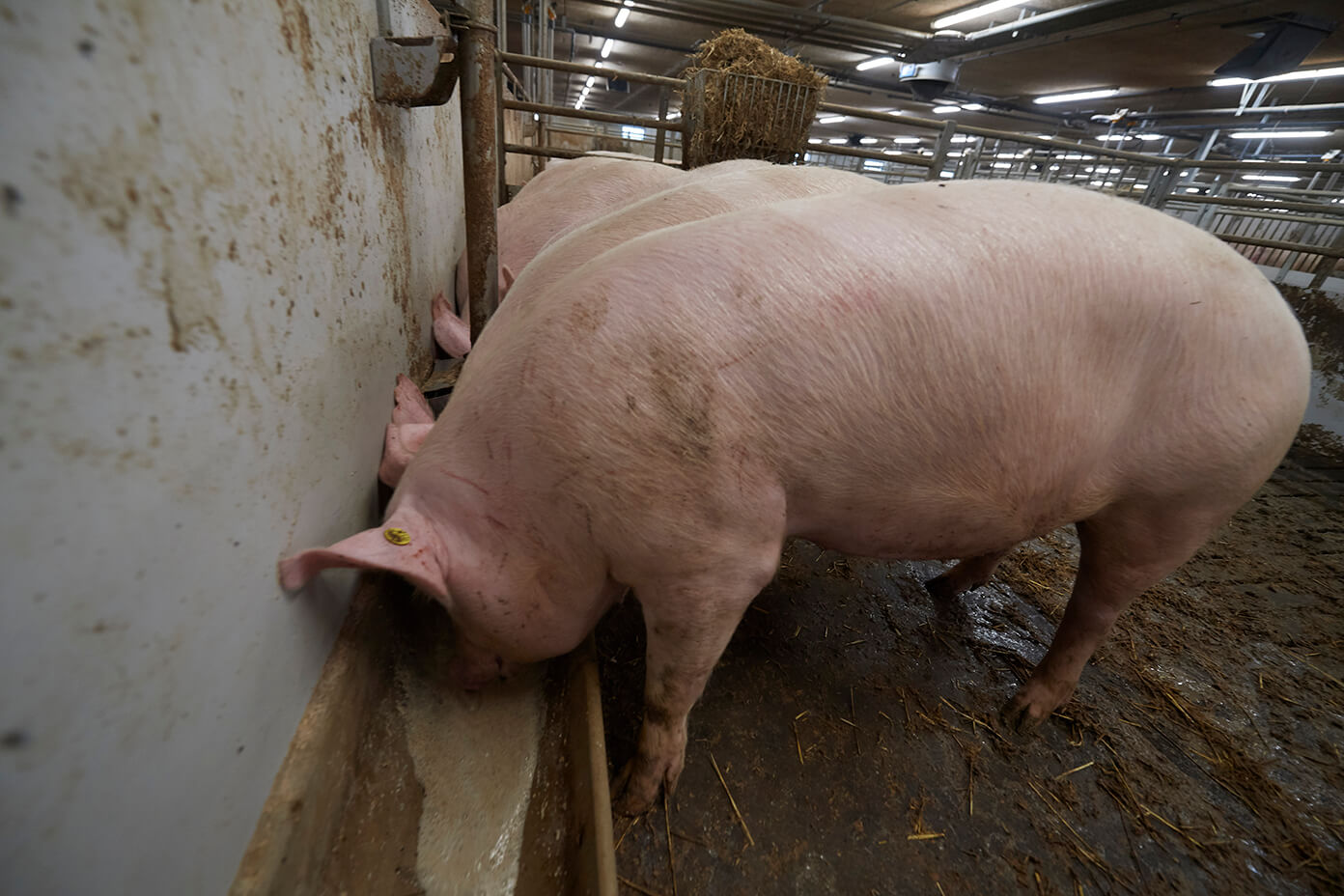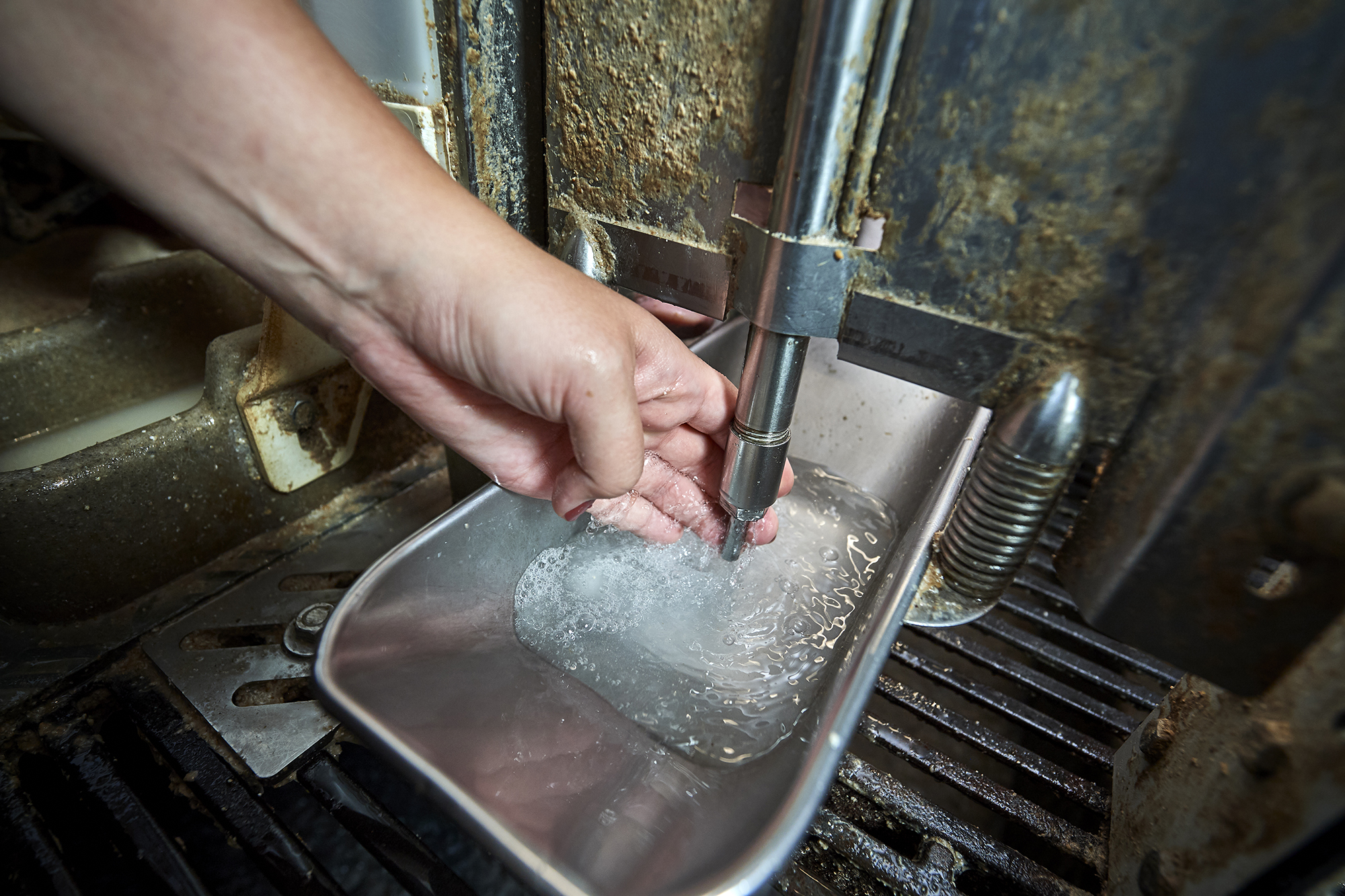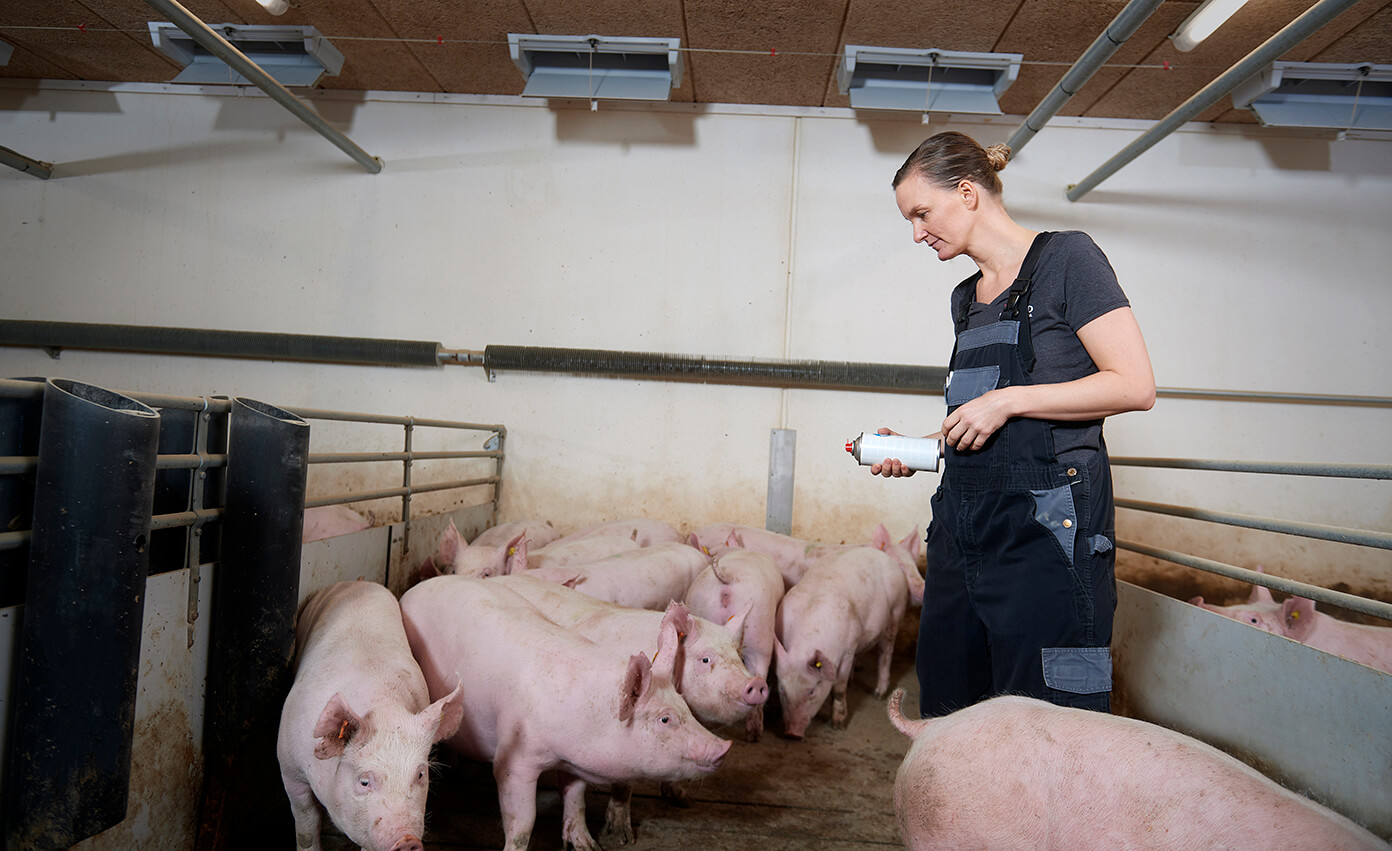Finishers – pigs from 60 kg until slaughter
Targets:
- Feeding and water in the section (feeding curves etc.).
- Pen design and stocking density.
- Health and biosecurity.
- Climate control in the section.
- Preparing the section for new pigs arriving.
Feeding and water for Finishers
Choosing the best feeding strategy to achieve the highest economical outcome in terms of growth, lean meat and feed consumption depends on several factors.
The table below shows the recommended content of energy and selected nutrients per kg feed in different weight stages. SID refers to the Standardized Ileal Digestible content.
| Energy, per kg feed | 45-75 kg | 60-115 kg | 75-115 kg |
|---|---|---|---|
| MJ ME/kg feed | 13.2 | 13.1 | 13.1 |
| MJ NE/kg feed | 9.4 | 9.3 | 9.3 |
| Danish Feed Units, FU/kg feed | 1.06 | 1.05 | 1.05 |
| Basic nutrients, digestible per kg | |||
| Protein. SID min g/kg | 131 | 121 | 117 |
| Lysine. SID g/kg | 8.5 | 7.8 | 7.5 |
| Digestible phosphorus. g/kg | 2.4 | 2.2 | 2.1 |
| Calcium without phytase. g/kg | 7.4 | 7.0 | 6.9 |
The full nutrient tables can be found here.
In finisher pigs, the hunger for feed is primarily chemically controlled by the concentration of nutrients in the blood, as opposed to the physical effect of the stomach which is more common for sows. The regulation of hunger is influenced by genetic development, and pigs with a high growth capacity will be able to eat more before the regulation sets in and naturally reduces their intake.
To ensure the best possible utilisation of the feed, it is recommended to feed finishers restrictively. By sectioning castrates and males from the females and adjusting the feeding curve to accommodate each group best possible, an even higher feed utilisation can be achieved especially for the male/castrate group which can tend to have a higher feed intake and poorer lean meat performance if feed ad libitum.

Introducing the correct feeding method and ensuring that the nutrient requirements of the pigs are met will ensure the economically optimal performance on feed utilisation and lean meat yield.
The recommended feeding method and energy level for growers and finishers are mentioned below:
| Weight | Preferred feeding method |
|---|---|
| 60 – 80 kilos | Restricted feeding |
| 80 – slaughter | Restricted feeding |
Water supply for finishers
Sufficient amounts and quality of water are crucial for optimal growth.
The water supply must be designed with easy access for all animal sizes and must support several weaners drinking at the same time. Recommendations on water quality can be found here.
 |
 |
Correct water flow throughout the production facility is important. The water supply should be able to maintain sufficient flow rates for all drinkers while the main part of the drinkers is in use.
| Type of water supply | Needs | Pigs per drinker | Comment |
|---|---|---|---|
| Drinking bowl | Min. 1 l/min. | 15-30 pigs/bowl | |
| Drinking nipple | Min. 0.5 l/min.
Max. 1.2 l/min. |
10 pigs per nipple | Minimum 2 nipples per pen. |
* Due to growth, health and welfare, a backup water supply should always be available for the pigs in case of defects.
Everyday tasks among the finishers
Inspect all animals at least once, but preferably twice, a day
Pay particular attention to:
- Health – do any of the pigs or the environment show signs of disease?
- Do all pigs get up? If not check if the animal is sick or hurt.
- Check the feed dispensers and water nipples – check them and keep them clean.
- Adjust the feeding level to ensure the best possible feed utilisation and optimised daily gain.

Weekly monitoring of the weight development
Weighing 8-10% of the pigs/pens weekly or bi-weekly basis is a simple, but very effective tool to monitor the growth and the average daily gain. This will indicate whether the development is on track or if any interventions are needed.
